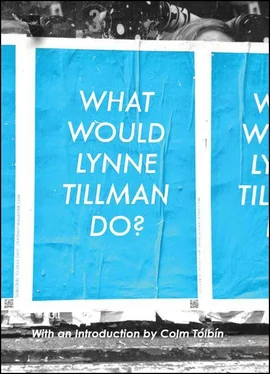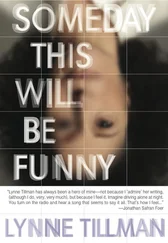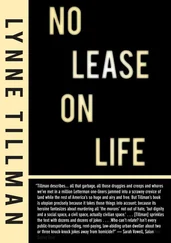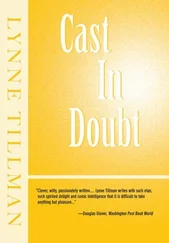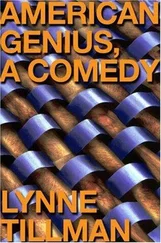Any half-sentient artist or writer will recognize this aesthetic and ethical Maginot Line. What is crossing the line? Whose line is it anyway? Should it be crossed, redrawn — and if so, in what way? Waters doesn’t proscribe behavior or approaches; the reader can infer from his questions and choices that he continually negotiates art’s ambiguous terrain. There are no rules; there’s self-rule in art, which is its freedom, and a slide rule for one’s mutating sense of good, bad, right, wrong. Inside this collection resides a unique version of art criticism and artistic self-criticism. “Who’s the real extremist,” he asks, “Johnny Mathis or myself?”
“Tennessee Williams saved my life,” Waters announces, calling the playwright his “childhood friend. I never met Tennessee Williams. Nobody has to meet [him]; all you have to do is reread his work. Listening to what he has to say could save your life, too.” Art can save lives. There it is, a claim assiduously avoided in our wary art world, so the notion just might refresh and comfort the jaded, even though it jars with experience and reason. Waters doesn’t shrink from absurdity — he rambles around in it. “Sometimes,” he says, “you have to lighten up.” Waters thinks funny. Even when he’s arguing that Van Houten deserves to be paroled, he can’t help but relieve the gloom: “Initially both my mother and Leslie’s were nervous about our friendship. ‘Does the Manson Family have to have our address?’ my mother moaned when I once had a letter sent there.”
Waters is a reluctant ethicist, owing to his overwhelming sense of the ridiculous. He takes the piss out of himself often, but he can’t stop offering help. In Role Models , there is actually a guide on how to love your misbegotten self. “Cult Leader,” the last chapter, reveals Waters as the anti-Dr. Phil for our time. He declares: “I’m so tired of writing ‘Cult Filmmaker’ on my income tax forms. If only I could write ‘Cult Leader,’ I’d finally be happy. Would you come on a spiritual pilgrimage with me?” If you do, reader, here’s a sample of his ecstatic dicta: “A filth movement. to the final Armageddon of the elimination of the tyranny of good taste.” “You’ll need a uniform. A habit. A ‘fallen angel’ look to intimidate yet attract.” “Damaged people make the best warriors.” “What you don’t see is always sexier.”
John Waters, cult leader, hopes to encourage sexual fantasies, to have his followers feel no shame, take risks and die by “spontaneous combustion.” Anyone who reads this collection, highly recommended for all sorts of minds, dispositions and school libraries, would do well to join.
Tennis, with actual winners and losers, contents me and other workers in fields of indeterminacy — artists, musicians, writers — where first prizes declare arguable standing. Choosing sides is often wrong but not in sports. In this year’s US Open, Novak Djokovic beat Rafael Nadal as if Nadal were an ordinary mortal. I was torn between them, and miss that action. Fortunately, since art can be long, sports short, I’m absorbed in Diane Arbus: A Chronology, 1923–1971 (Aperture, 2011), a book of her beautifully written diary entries, letters and work notes.
Sides formed early about her enigmatic, brilliant photography. At home, Arbus’s photographs upset my father, viscerally. I experienced them, as an adolescent, the way I did Franz Kafka’s The Metamorphosis (1915) — identifying with uncanny strangeness, fascinated by what I didn’t understand. Some of what Arbus had imaged — people once referred to as “freaks”—was usually kept from sight. In the 1960s, families still institutionalized their “mentally retarded” or “insane” relatives. Various art critics and civilian viewers over the years have thought Arbus cruelly exploited unsuspecting subjects. Some felt she went slumming.
There are English words whose definitions confound definition. Words such as “exploitative,” “ambitious” or “pretentious,” when applied to art and writing or their creators, form blurry impressions, subjectivity shaping them. Mindful of Virginia Woolf’s dictum, in her 1937 essay “Craftsmanship,” that “words don’t live in dictionaries, they live in the mind,” I know recourse to a dictionary definition won’t clarify much that is significant to me. Words live in usage, with connotations.
Lewis Hine, among other documentary photographers, pictured desperate people in desperate conditions. His photographs presumed what I’ll call a “benign-looking contract” between viewer and viewed. “We” viewers were expected to feel sympathy for “others” and their stricken lives. Specific assumptions shaped the spectator as well as those imaged. Hine’s subjects existed primarily in one dimension, which might indeed overwhelm other aspects of their lives, but it was likely only one way they saw themselves. Still, Hine had a specific purpose in shooting them as he did: to expose terrible poverty, appalling slums. I can’t imagine that he was grilled about intentionality then.
Any discomfort I experience looking at a Hine feels simpler to explain than my discomfort with an Arbus, because her purpose was various, ambiguous, dimensional. Deprivation, lack or difference in her work, which encompassed many living situations and conditions, is generally psychological, cultural and physical, often genetic. There is no consensus about — and in looking at — the characters she pictured. No consensus in part because how “normals” perceive “stigmatized” people, and vice versa, is an ever-evolving process. (See Erving Goffman’s Stigma: Notes on the Management of Spoiled Identity , 1963, which Arbus read.) Goffman called these interactions “mixed-contacts.” There was also no “social-looking contract”—my term — codifying how viewers should look at her photographs. Still isn’t.
“Someone told me it is spring, but everyone today looked remarkable, just like out of August Sander pictures, so absolute and immutable down to the last button [.] all odd and splendid as freaks and nobody able to see himself, all of us victims of the especial shape we come in,” wrote Arbus in 1960, in a note to her friend, the artist Marvin Israel. Arbus recognized the precariousness of her interests and knew her terrain was treacherous. Curiosity, identification, fear, discontent with her upper-middle-class origin, and fascination with what she was not, caused her to seek and embrace difference. Her characters aren’t posed in shadows. They look directly, baldly, at the camera. Her photographs don’t take a recognizable side: she is not moralistic or judgmental. Her most infamous or celebrated images reside in the interstices of ethical positions, since the eye of a wavering beholder is also a judge.
A viewer might be thrown contending with Identical Twins, Roselle, N.J . (1967), girls who are common or normal and also different. Or, by Arbus’s representation of an upper-middle-class white family in their suburban backyard, A Family on the Lawn one Sunday in Westchester (1968), which appears to have landed in The Twilight Zone —“nearly like [Harold] Pinter but not quite” she writes in a letter. Or, by A Jewish Giant at Home with his Parents in the Bronx, N.Y . (1970): giant man and parents stand in the living room of a small apartment and compose an unbalanced image, one that also upends the nuclear family and makes it “other,” even perverse.
Risking ambiguities, Arbus vigorously subverted the subject/object position, shoving the viewer onto her soft ground. She interrogated looking, aggressively, and made looking itself controversial.
Читать дальше
